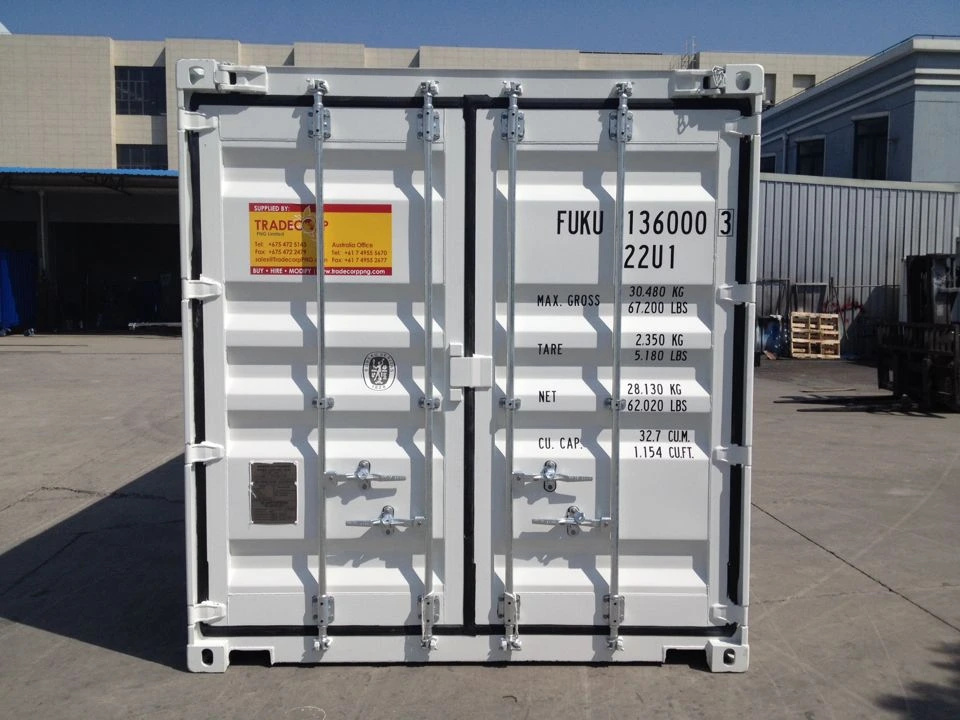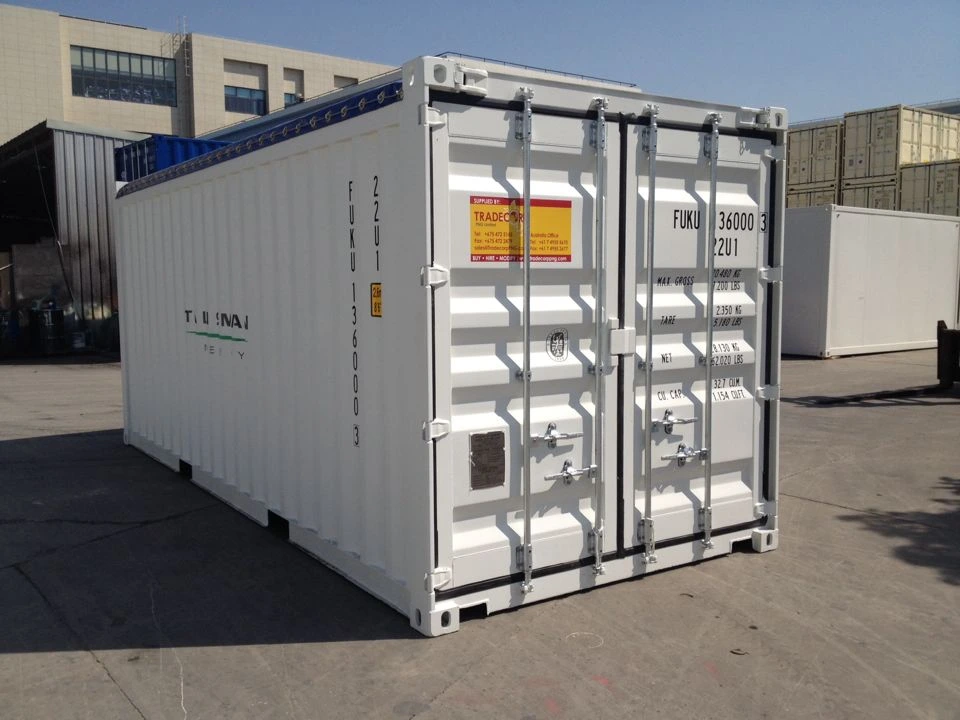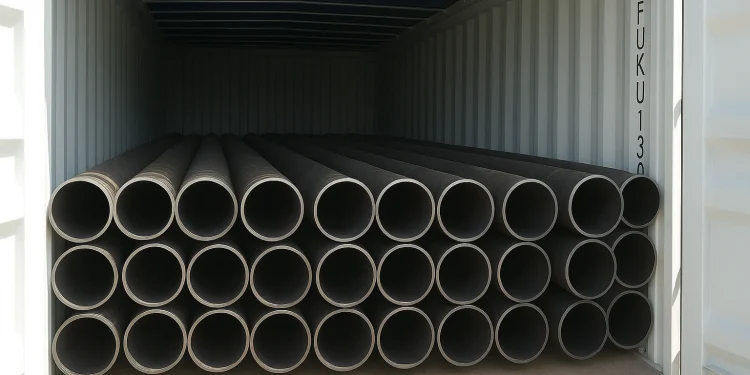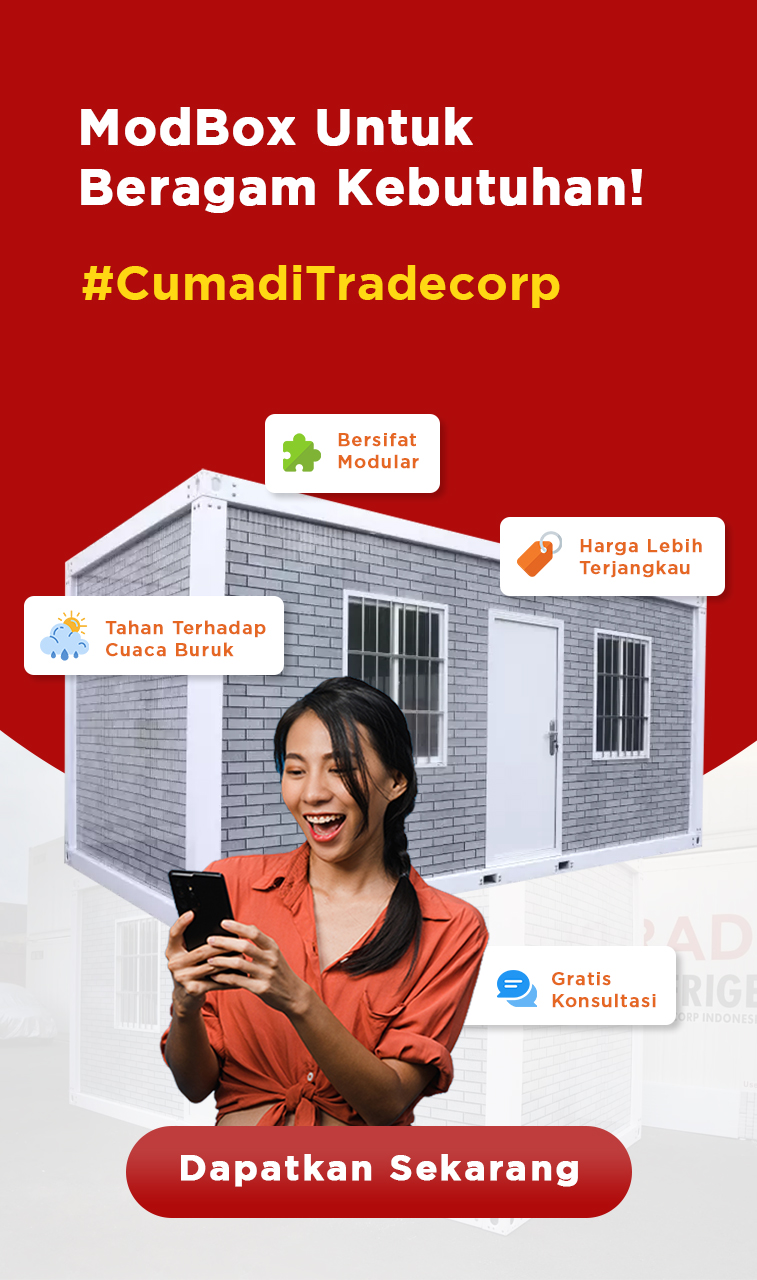ERW steel pipe delivery can be completed faster when the loading process in the field does not take too much time. That is why using an open top container is recommended because it helps shorten the loading and unloading duration.
ERW or Electric Resistance Welded steel pipe is made from steel strip plates that are formed into tubes by joining the edges together using electric current. This process differentiates it from seamless pipes, which are manufactured without any weld joints. ERW pipes are commonly used for applications such as water and gas pipelines, scaffolding, bridges, vehicle exhaust systems, machine components, and towers.
ERW pipes come in various sizes and weights depending on their outer diameter, wall thickness, and length. Understanding these measurements helps you determine whether a 20ft or 40ft container is more suitable for your ERW steel pipe delivery.
Generally, cargo containers including open top containers come in 20ft and 40ft sizes. A 20ft container has a length of 6.058 meters, while a 40ft container measures 12.192 meters long. Both are available in two height options, standard height (8 feet 6 inches or 2.591 meters) and high cube (9 feet 6 inches or 2.896 meters). The width for both 20ft and 40ft containers is the same at 8 feet or 2.438 meters.
Unlike general purpose containers designed for general cargo, open top containers are built specifically for over height cargo or items that exceed the typical container height. These containers feature an open roof to facilitate the loading of industrial machinery, prefabricated building components, steel columns, turbine blades, and ERW steel pipes, whether loaded from the top or through the container doors.
If you plan to use an open top container for your ERW steel pipe delivery, you can rely on Tradecorp for your container needs. Since 2014, Tradecorp has supported business operations and field projects by providing shipping containers, offshore DNV containers, ISO tank containers, modified containers, modular prefabricated buildings, and RapidFrame construction.
Want to know more about open top containers? Find out the full details in the following sections.
Daftar isi
Open Top Container for ERW Steel Pipe Delivery



Open Top Container Sizes and Specifications
20ft Open Top Container
|
Specification |
Detail |
| Length x Width x Height (meters) | 6.058 x 2.438 x 2.591 |
| Maximum Gross Weight | 30,480 kg |
| Tare Weight | 2,350 kg |
| Net Weight | 28,130 kg |
| Cubic Capacity | 32.7 cubic meters |
40ft Open Top Container
|
Specification |
Detail |
| Dimensions (meters) | 12.192 x 2.438 x 2.591 |
| Maximum Gross Weight (M.G.W) | 32,500 kg |
| Maximum Payload (Net) | 28,700 kg |
| Tare Weight | 3,800 kg |
Advantages of Open Top Container
Compared to containers designed for general cargo, open top containers offer several advantages for ERW steel pipe delivery.
1. Easy Loading and Unloading for Large Cargo
The roofless design allows loading and unloading from the top using cranes. This feature is especially useful for oversized, tall, or irregularly shaped cargo that cannot be loaded through the doors of a standard container.
2. Ideal for Industrial Goods and Construction Materials
Open top containers are commonly used to transport heavy machinery, large industrial components, steel frames, and construction materials such as beams and steel pipes. The vertical access provides convenience for operators to position or stack goods without tilting or unpacking them.
3. Flexible Access
In addition to the open roof, this container type is also equipped with end doors for additional access. The combination of vertical and horizontal entry points speeds up loading time and increases operational efficiency in the field.
4. Larger Cargo Capacity
With a removable roof, the interior volume can be fully optimized. This allows the transportation of tall cargo without compromising stability or safety during transit.
5. Suitable for Various Industrial Sectors
Its versatility makes the open top container widely used in industries such as construction, manufacturing, agriculture, and maritime logistics. A single container type can serve multiple functions without major modifications.
6. Can Be Protected with Additional Covers
Although the top is open, it can still be protected with a hard or soft top cover after loading. This cover helps safeguard the cargo from weather exposure or external elements throughout the delivery process.
Comparison Between Open Top Container and General Purpose Container
|
Open Top Container |
General Purpose (GP) Container |
| This unit features a removable or open roof, usually equipped with a tarpaulin cover for temporary protection. | This unit has a fixed, fully enclosed roof to protect the cargo from weather and dust. |
| Cargo can be loaded and unloaded from the top using a crane or heavy lifting equipment, making it suitable for large or tall goods. | Loading and unloading are done through double doors at the front end of the container. |
| Ideal for oversized, tall, or irregularly shaped cargo such as industrial machinery, steel pipes, and construction materials. | Designed for general cargo packed in pallets, cartons, or crates that can easily fit through the front doors. |
| Typically available in 20ft and 40ft sizes, with both standard and high cube variants. | Available in 20ft and 40ft sizes, including high cube types for greater storage capacity. |
| Can accommodate cargo that exceeds door height limits thanks to its open roof design. | Height capacity is limited by the door opening, about 2.28 m (low cube) and 2.58 m (high cube). |
| Can be covered with a tarpaulin or hard cover, though it is not completely weatherproof when open. | Fully enclosed structure that provides complete protection from weather, dust, and external interference. |
| Suitable for industrial, manufacturing, and construction projects that require vertical loading access. | Ideal for packaged goods such as cartons, crates, barrels, bottles, electronics, textiles, and personal belongings for regular shipments. |
| More efficient for heavy or oversized cargo that requires top-loading access without door height restrictions. | More efficient for standard cargo that can be handled with forklifts or hand pallets. |
| Commonly used for heavy machinery, construction equipment, steel frames, and glass panels. | Commonly used for building materials, manufactured goods, and consumer products in packaging. |













